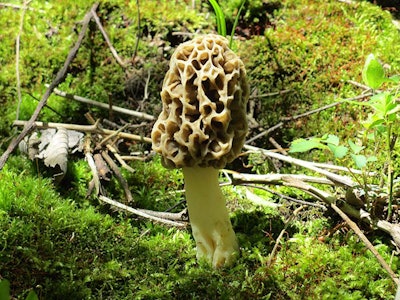
Study finds fungal pretreatment unlocks nutrients from straw, but results remain inconsistent
Fungal pretreatment offers a potential low-cost way to unlock nutrients from alternative sources of biomass, but achieving consistent results could prove tricky, according to a new research review.
The review, published in the journal Animal Feed Science and Technology, compiles data from multiple studies seeking a means of using fungi to degrade biomass such as wheat and rice straw to render them suitable for use in feed for ruminants. However, the paper determined that the efficacy of fungal pretreatment can vary significantly, even when the same species of fungi is used.
Data from tests of 32 strains of three fungal species identified two promising candidates, according to Nazri Nayan, a senior lecturer at the University Putra Malaysia and the lead author on the Animal Feed Science report. However, the performance of even those strains could vary considerably from one experiment to the next, with C. subvermispora increasing the degradability of straw by 28-48% over seven weeks, and L. edodes ranging from a 15% to 32% reduction in degradability over the same time period. Although the potential low-cost of fungal pretreatment is attractive, Nayan said, this variability hamper the use of fungi in commercial settings.
“In my opinion, one of the biggest challenges is to produce a consistent and homogenous fungal-treated biomass, in terms of nutritive value,” Nayan said in an email. “This may require a proper chamber for the solid-state fermentation to control various parameters — temperature, humidity, pH and aeration.”
It may also require further scientific inquiry before fungal pretreatment can be adopted in commercial settings, Nayan said. Fungal enzymes, according to the review, may be responsible for the pretreatment’s ability to degrade lignin, and for the variability in the efficacy of fungal pretreatment. Fungi, like ruminants and other animals, don’t really digest lignin, but some fungi produce enzymes to break down lignin in order to access energy and nutrients contained within the substrate. The trouble with these enzymes, Nayan said, is that fungi don’t always produce the same enzymes, even if they have the genetic capacity to produce a certain set of chemicals.
“The type and level of enzymes secreted by these fungi also depend on the availability of nutrients and other co-factors (organic acids, chelating ions, etc.), Nayan wrote.
More research is needed to understand this “fungal enzyme toolbox,” Nayan said. Selective breeding, more modeling of fungal growth, and a greater understanding of the chemical processes taking place within fungal biomass will also help scientists and eventually commercial producers reduce the variability associated with fungal pretreatment, he said.















